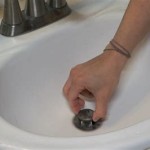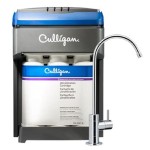Parts of a Sink Stopper: A Comprehensive Guide
A sink stopper, also known as a drain plug or sink plug, is a crucial component of any sink. Its primary function is to prevent water from draining out of the basin, allowing the sink to be filled for various purposes such as washing dishes, handwashing, or soaking items. While the basic function is simple, the mechanism involves different parts working together to create a watertight seal. Understanding these individual parts and their roles is essential for proper maintenance, troubleshooting, and replacement when necessary.
The complexity of a sink stopper system can vary depending on the type of stopper. Older sinks often feature a simple rubber or metal plug that is manually inserted into the drain. Modern sinks, however, typically utilize more sophisticated systems that integrate a lever or button to control the raising and lowering of the stopper. Regardless of the complexity, each system relies on specific components to work effectively.
This document will provide a detailed overview of the various parts found in common sink stopper systems, outlining their function and importance within the overall mechanism. This information will be relevant for homeowners, plumbers, and anyone interested in understanding the inner workings of a common household fixture.
The Stopper Body
The stopper body is the primary component responsible for physically blocking the drain opening. It is the part that directly prevents water from flowing through the drainpipe. The design and material of the stopper body are crucial factors in its effectiveness and durability.
Stopper bodies are typically made from materials such as brass, stainless steel, plastic, or rubber. Brass and stainless steel offer excellent durability and resistance to corrosion, making them suitable for long-term use. Plastic stoppers are often more affordable, but may be less durable and more prone to wear and tear. Rubber stoppers offer a flexible seal, conforming to slight imperfections in the drain opening.
The shape of the stopper body is also significant. Many stoppers feature a rounded or slightly tapered shape to ensure a snug fit within the drain. Some stoppers have a flat bottom with a rubber gasket around the edge to create a watertight seal. The specific design will depend on the type of stopper and the intended application.
In pop-up drain assemblies, the stopper body usually has a pivot hole. This hole is where the horizontal pivot rod is inserted, allowing the stopper to be raised and lowered. The positioning and size of this pivot hole are critical for the proper operation of the pop-up mechanism.
The Pivot Rod
The pivot rod is a horizontal metal rod that connects the stopper body to the lift rod. It is a key component in pop-up drain assemblies, enabling the user to control the stopper from above the sink. Without the pivot rod, the stopper would remain stationary within the drain.
The pivot rod is typically made from brass or stainless steel to resist corrosion and ensure smooth operation. It is designed to rotate within a designated opening in the drainpipe and connects to the stopper body through the pivot hole.
The length of the pivot rod is critical for proper functionality. If the rod is too short, it may not engage with the stopper body effectively. If it is too long, it may interfere with the drainpipe or other plumbing components. Therefore, selecting the correct pivot rod size is essential during installation or replacement.
The pivot rod often includes a spring clip or a retaining nut to secure it in place within the drainpipe. This prevents the rod from slipping out of position and ensures reliable operation of the pop-up mechanism. The spring clip or nut should be properly tightened to maintain consistent performance.
Leaks are a common issue associated with the pivot rod. The point where the pivot rod enters the drainpipe is susceptible to water leakage. This area is usually sealed with a rubber or silicone washer to prevent water from escaping. Regular inspection and replacement of this washer are necessary to maintain a watertight seal.
The Lift Rod and Knob
The lift rod is the vertical rod that extends from the pivot rod mechanism up to the sink's surface. It is connected to a knob or lever that the user manipulates to raise and lower the stopper. The lift rod serves as the primary interface between the user and the drain mechanism.
The lift rod is typically made from metal, such as brass or stainless steel, for durability and resistance to bending. It is usually threaded at the bottom end to allow for adjustment and connection to the clevis strap. The clevis strap connects the lift rod to the pivot rod, transferring the vertical motion of the lift rod into the rotational motion of the pivot rod.
The knob or lever attached to the top of the lift rod is designed for easy gripping and operation. Knobs are typically rounded or T-shaped, while levers offer a more ergonomic grip. The material and finish of the knob or lever should complement the sink's overall aesthetic.
The height of the lift rod is adjustable, allowing the user to customize the range of motion of the stopper. By adjusting the threaded connection between the lift rod and the clevis strap, the user can fine-tune the height to achieve the desired level of drain closure. Proper adjustment is crucial for preventing leaks and ensuring smooth operation.
Over time, the lift rod mechanism can become stiff or difficult to operate due to mineral buildup or corrosion. Regular cleaning and lubrication of the moving parts can help to prevent these issues and maintain smooth functionality. A silicone-based lubricant is generally recommended for this purpose.
The Clevis Strap
The clevis strap is a small, typically metal, component that connects the lift rod to the pivot rod. It is a crucial part of the pop-up drain assembly, translating the up-and-down movement of the lift rod into the rotational movement needed to open and close the drain.
Clevis straps are usually made from stamped metal, such as brass or steel, and are designed with multiple holes or slots. These holes allow for adjustment of the lift rod travel, which controls how far the stopper is raised or lowered. The clevis strap's design allows for precise calibration of the drain's opening and closing mechanism.
The clevis strap connects to the lift rod, usually via a screw or small bolt, and to the pivot rod, which passes through the drainpipe. This connection must be secure to prevent slippage or disconnection, which would render the pop-up drain inoperable.
The clevis strap is positioned behind the sink, often in a cramped and difficult-to-access area. This location makes inspections and adjustments challenging, but regular checks are important to ensure its integrity and proper connection to the other components.
Corrosion and wear are common issues that affect clevis straps, particularly in areas with hard water. Replacing a damaged or corroded clevis strap is a relatively simple and inexpensive repair that can significantly improve the functionality of the sink drain assembly.
The Flange
The flange is the visible, often chrome-plated, ring that sits atop the sink drain opening. It serves both a functional and aesthetic purpose, providing a finished look to the drain while also securing the stopper mechanism within the sink basin.
The flange is typically made from metal, such as brass or stainless steel, with a chrome, nickel, or other decorative finish. The finish should match the other fixtures in the bathroom or kitchen for a cohesive design.
The flange is usually threaded or secured with a nut underneath the sink, holding it firmly in place. This secure attachment is important to prevent leaks and to ensure the stability of the entire drain assembly.
The flange's opening provides a pathway for water to flow into the drainpipe. Its design must allow for efficient drainage without obstructing the stopper's movement.
Over time, the flange can become tarnished or corroded, particularly in areas with hard water or harsh cleaning chemicals. Regular cleaning with a mild soap and water can help to maintain its appearance. In cases of severe damage, the flange can be replaced without replacing the entire drain assembly.
The Tailpiece
The tailpiece is a short length of pipe that connects directly to the bottom of the sink drain flange. It serves as the intermediary between the sink drain and the rest of the drain plumbing system. It is typically made of metal or plastic, depending on the overall plumbing configuration.
The tailpiece usually connects to the P-trap, a curved section of pipe that traps debris and prevents sewer gases from entering the building. The length of the tailpiece can be adjusted to accommodate different P-trap heights and plumbing setups.
The connection between the tailpiece and the flange, and between the tailpiece and the P-trap, is typically sealed with rubber or plastic washers to prevent leaks. These washers must be properly installed and tightened to ensure a watertight seal.
The tailpiece is an important part of the drain system's ability to remove water efficiently. Any obstruction or blockage in the tailpiece can lead to slow drainage or even a complete blockage of the sink.
Replacing the tailpiece is a relatively straightforward task, and it is often necessary when upgrading or repairing the sink drain system. When replacing the tailpiece, be sure to use the correct size and type of pipe to ensure compatibility with the existing plumbing.
Understanding these components of a sink stopper system allows for a more informed approach to maintenance, troubleshooting and repair. Knowledge of these parts can save time and money when addressing common sink drain issues.
Parts Of A Sink The Home

Parts Of A Sink The Home

How To Adjust A Bathroom Sink Pop Up Drain 1 Tom Plumber

Bathroom Sink Pop Up Stopper Parts Diagram

Parts Of A Sink The Home

Bathroom Sink Popup And Stopper Problems

Parts Of A Sink The Ultimate Guide

Danco Bathroom Sink Plastic Pop Up Assembly In Chrome 80767

Parts Of A Sink The Ultimate Guide

Parts Of A Sink Complete Guide For Diy Plumbing







